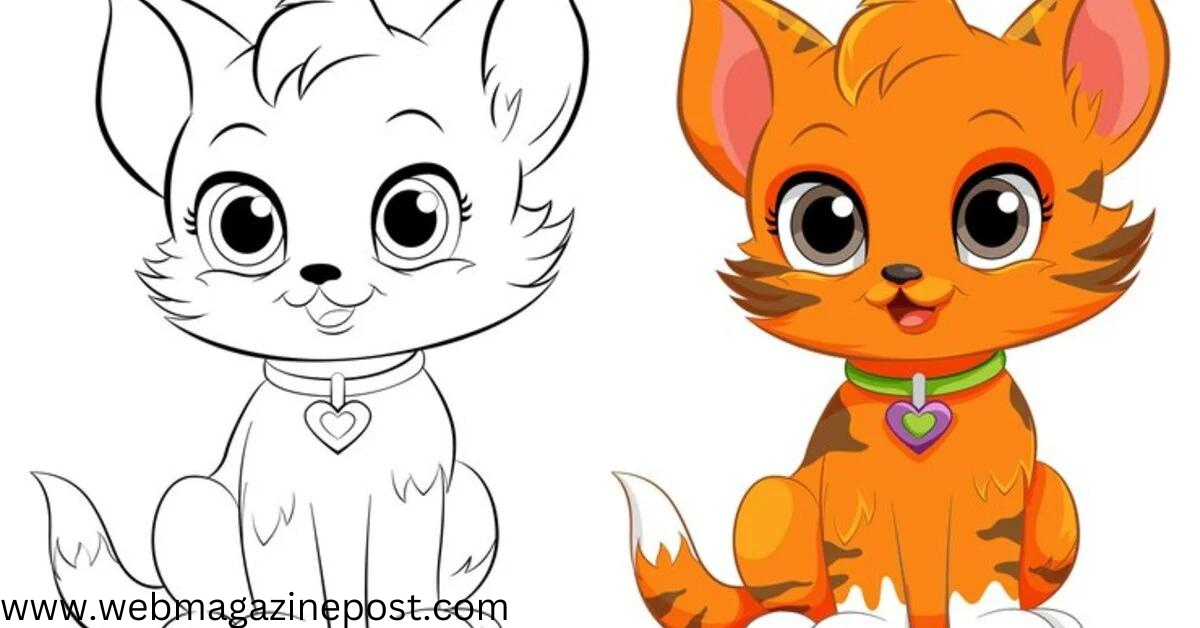
Mastering the Art of Drawing Cats: 100% Comprehensive Guide for Beginners and Beyond
Introduction to Drawing Cats
Drawing cats can be both a delightful and rewarding experience, especially when exploring the unique and whimsical concept of the A4Z_-YMTKR8= Cat. This guide aims to provide a comprehensive overview of drawing cats, from understanding basic anatomy to mastering different techniques and styles.
The Joy of Drawing Cats
Importance of Understanding Anatomy
To create realistic and expressive cat drawings, it’s crucial to have a solid understanding of feline anatomy. This knowledge helps in capturing the essence of a Drawing cat’s movement, posture, and personality, making your drawings come to life.
Tools and Materials Needed
Before you start, gather the essential tools:
- Pencils (HB, 2B, 4B)
- Erasers (kneaded and vinyl)
- Sketchbook or drawing paper
- Fine liners or ink pens
- Coloring tools (colored pencils, markers, or watercolors)
Basic Drawing Cats Anatomy
Skeletal Structure
Drawing Cats’ skeletal structure is the foundation of its form. Familiarize yourself with the key bones, such as the skull, spine, ribs, and limbs. Understanding these will help you depict accurate proportions and movements.
Muscular System
Muscles define a cat’s sleek and agile body. Pay attention to major muscle groups like the shoulder, back, and hind legs, which influence the cat’s graceful movements and poses.
Proportions and Symmetry
Drawing Cats have distinct body proportions, such as a small head relative to their body and a long, flexible spine. Maintaining symmetry in your drawings ensures a balanced and realistic appearance.
Drawing Techniques
Sketching Basics
Start with light, simple sketches to outline the basic shape and proportions of the cat. Use loose lines to capture the overall form before adding details.
Line Art Techniques
Once the basic sketch is complete, refine your drawing with cleaner, more defined lines. Vary the line thickness to add depth and dimension to your artwork.
Shading and Texturing
Shading adds volume and realism to your drawing. Use hatching, cross-hatching, and blending techniques to create shadows and textures, enhancing the three-dimensional feel of your cat.
Different Cat Breeds
Domestic Shorthair
Domestic Shorthairs are common and versatile subjects. Their simple, sleek appearance makes them ideal for practicing basic drawing skills.
Persian Cats
With their long fur and distinctive faces, Persian cats offer a unique challenge. Focus on capturing their fluffy fur and expressive eyes.
Siamese Cats
Siamese cats have a slender build and striking features. Emphasize their elegant posture and pointed ears.
Maine Coon
Maine Coons are large and majestic. Pay attention to their bushy tails and tufted ears to capture their grandeur.
Bengal Cats
Bengal cats are known for their wild, leopard-like appearance. Highlight their distinctive spots and muscular build.
Understanding Cat Poses
Sitting Pose
A sitting cat is calm and composed. Observe how the body weight is distributed and how the legs are positioned.
Sleeping Pose
Sleeping cats are relaxed and serene. Capture the curves of their curled-up bodies and the gentle rise and fall of their breathing.
Stretching Pose
A stretching cat showcases its flexibility. Focus on the elongated body and extended limbs.
Playing Pose
Cats at play are dynamic and energetic. Capture the sense of movement and the playful expressions on their faces.
Hunting Pose
A hunting cat is focused and alert. Emphasize the tensed muscles and sharp gaze as they stalk their prey.
Capturing Expressions
Eyes and Ears
The eyes and ears convey a cat’s mood and attention. Draw the eyes with care to reflect their emotions, and adjust the ears’ positions to show alertness or relaxation.
Mouth and Whiskers
A cat’s mouth and whiskers add to its expression. Small changes in the mouth shape can indicate different emotions, and the whiskers’ position can suggest alertness or curiosity.
Body Language
A cat’s overall body language is essential for conveying its mood. A relaxed cat has loose, flowing lines, while an agitated cat has sharp, tense lines.
Step-by-Step Drawing Guide
Simple Cat Sketch
Start with a basic sketch of a cat, focusing on simple shapes and proportions. Keep it light and loose to establish the overall form.
Detailed Cat Drawing
Build on your simple sketch by adding details like fur texture, facial features, and muscle definition. Refine the lines and enhance the realism.
Realistic Cat Portrait
For a realistic portrait, pay close attention to the finer details. Use shading and texturing techniques to create depth and bring out the cat’s character.
Cartoon Cat
Cartoon cats are fun and whimsical. Exaggerate features and expressions to create a playful and stylized version of a cat.
Coloring Your Drawing
Choosing the Right Colors
Select colors that match the cat’s fur, eyes, and other features. Consider the lighting and environment to choose appropriate shades.
Techniques for Coloring
Use layering and blending techniques to achieve smooth transitions and vibrant colors. Experiment with different mediums like colored pencils, markers, or watercolors.
Adding Highlights and Shadows
Highlights and shadows add realism to your colored drawing. Use light and dark tones to create contrast and emphasize the cat’s form.
Common Mistakes and How to Avoid Them
Proportion Issues
Ensure the cat’s body parts are in the correct proportion. Practice drawing different poses to improve your understanding of feline anatomy.
Incorrect Shading
Shading should enhance the form, not flatten it. Pay attention to the light source and how it affects the cat’s body.
Stiff Poses
Avoid stiff, unnatural poses. Study real cats and reference photos to capture fluid and dynamic movements.
Interpretation and Impact
Drawing cats, especially the imaginative A4Z_-YMTKR8= Cat, allows for creative expression and a deeper appreciation of these graceful creatures. Each drawing is an opportunity to explore different styles and techniques, making the process as enjoyable as the result.
Conclusion
Drawing cats is a delightful journey that combines observation, practice, and creativity. Whether you’re sketching a simple outline or crafting a detailed portrait, each step brings you closer to capturing the essence of these fascinating animals.
FAQs
What are the best tools for drawing cats?
Essential tools include pencils, erasers, sketchbooks, fine liners, and coloring tools like colored pencils or markers.
How can I improve my cat drawing skills?
Practice regularly, study feline anatomy, observe real cats, and experiment with different techniques and styles.
What should I focus on when drawing cat expressions?
Pay attention to the eyes, ears, mouth, and overall body language to capture the cat’s mood and personality.
How do I choose the right colors for my cat drawing?
Consider the cat’s fur, eyes, and the lighting environment. Use layering and blending techniques for smooth color transitions.
What are common mistakes to avoid when drawing cats?
Common mistakes include incorrect proportions, flat shading, and stiff poses. Practice and observation can help you overcome these issues.


